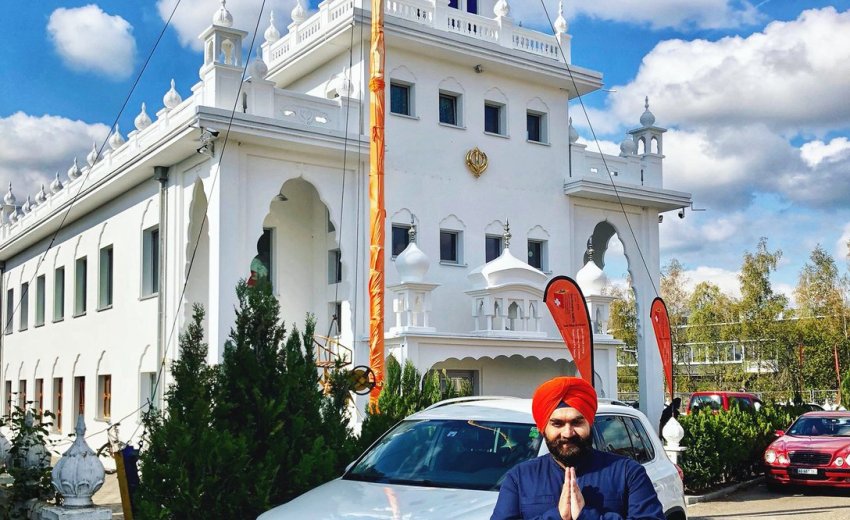In the Däniken town of Northern Switzerland, a gurudwara stands tall with a glistening yellow building that has four onion-shaped turrets. It stands out in the middle of the industrial town, which is otherwise known for the Gogsen nuclear plant. The Daniken gurudwara, a place of worship for the followers of Sikhism, was established in 2002 by a small Sikh community who came and settled in Switzerland after the religious upheaval in India.
From India to Switzerland
In 1984, then-Prime Minister Indira Gandhi ordered Indian forces to storm the revered Sikh shrine, Golden Temple, in Amritsar. The motive was to drive out Sikh separatists who were reported to have been hiding there. In the next few months, anti-Sikh riots in Delhi started where the followers of the Sikh faith were tortured, and murdered on a large scale. As a result, many Sikhs left India to find a secure abode elsewhere, and some of them ended up in Switzerland.
Until the early 1990s, a few hundred Sikhs resided in the Basel region, and the group thereafter gathered in Roggwil, canton of Bern. This gave rise to the Gurudwara of the Sikh community of Switzerland, which opened in 2002 in Daniken, Solothurn.
Gaining foothold in the new land
The 72-year-old Christoph Baumann, a specialist in Indian religions and a frequent visitor to the Däniken gurudwara, was one of the first Swiss individuals to welcome the Sikh community. He brought a copy of the holy Guru Granth Sahib Ji from England and gave the newly migrated Sikhs a space in his home to pray. It is believed that around twenty-five Sikhs would usually gather at Baumann's house for worship initially. His close contact with Sikhs for an extended period inspired him to write a thesis on the issues the community has faced and continues to encounter.
He says, “ The Sikhs faced all the difficulties normally experienced by new immigrants. In addition, their distinct appearance made it tough for them to find work or obtain a room for worship.”
He recently published a manual in German about the Sikh religion, Sikh-Religion in der Schweiz that addresses many of the concerns both Sikhs and others might have about the religion’s traditional practices.
Hardships faced by Sikhs after migration
Since Sikhs have religious traditions and practices that are significantly different from the community in Switzerland, there were some major issues when they were trying to settle in the country. In 1990, a Zurich court upheld a fine issued against a turban-wearing Sikh man who was riding a motorcycle without a helmet. He was stopped by the police for continuing to drive when the traffic lights went red. He raised a petition in the court against religious discrimination, but his appeal was dismissed because Sikhism required the followers to cover their heads, which does not essentially mean wearing turbans only.
Also, some Sikhs carry a ceremonial dagger, also known as the kirpan, that has caused tension with the Swiss police, particularly when it is worn under clothes. In the past, many Sikh men have been detained under the charge of carrying a concealed weapon. However, as per the Broschüre Waffen in Kürze - Fedpol or the weapon brochure by the Federal Police of Germany, kirpan cannot be considered a weapon as its blade is not symmetrical, it does not have an automatic switching mechanism, and neither can it be used as a throwing knife. For years, Christopher Baumann collaborated with the community police in Basel to eliminate any confusion about the use and significance of kirpan.
Integration of Sikhs in the Swiss community
In Switzerland, Sikhs form a small religious minority. In the 1990s, the number of Sikhs reached over 3,000, but eventually, more than half of them emigrated to Canada and other countries. It is estimated that the country has around a thousand Sikhs at present. It is believed that despite the religious differences, Sikhs integrate well into Swiss society.
According to Baumann, unlike other Sikh diasporas, Swiss Sikhs have little interest in the occasionally violent Khalistan independence movement. Supporters want the Sikhs to have their own state, Khalistan, carved out of the Punjab region in India and Pakistan. The majority of the movement's funding came from the Sikh diaspora.
Religious harmony propagated by Swiss Sikhs
The community of Sikhs in Switzerland indeed abides by the value system that Sikhism propagates. They actively reach out to other groups and participate in inter-faith initiatives like the Interreligious Working Group in Aargau, and the House of Religions in Bern. All the Swiss gurudwaras, spanning across Däniken, Langenthal, Basserdorf, and Geneva are open to all, irrespective of caste, creed, religion, or gender. Anyone visiting a Sikh shrine is required to cover their heads and take off their shoes as a form of respect.
In the last three decades, Sikhs have integrated harmoniously into the Swiss community. They have four gurudwaras, where a religious service is usually held on Sundays. It usually includes path or reading the text from the holy Guru Granth Sahib, kirtan or songs of devotion, and ends with ardaas, which is a type of prayer. In the end, all those present are invited to langar or public kitchen for a meal prepared by volunteers with love and devotion.
